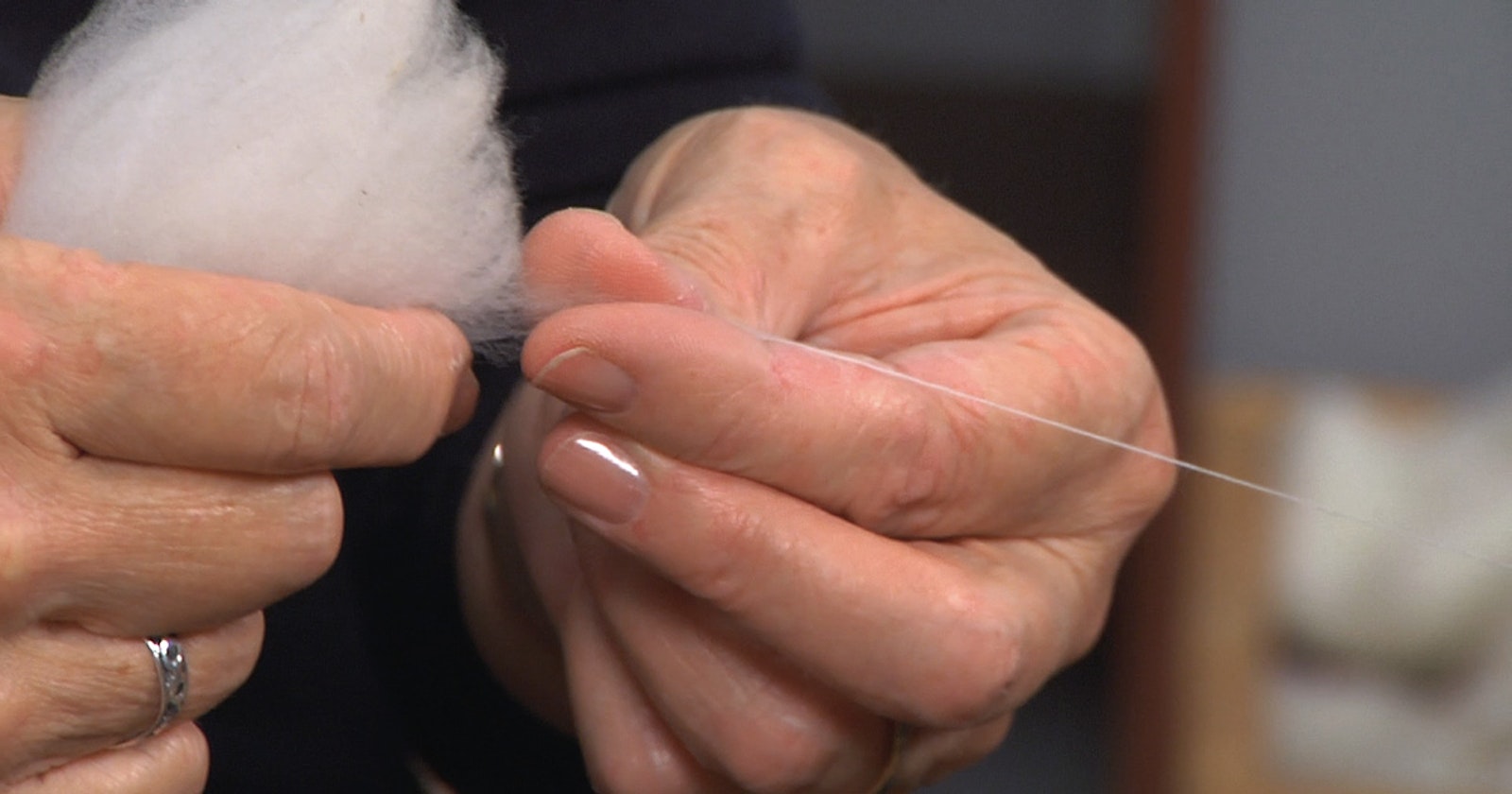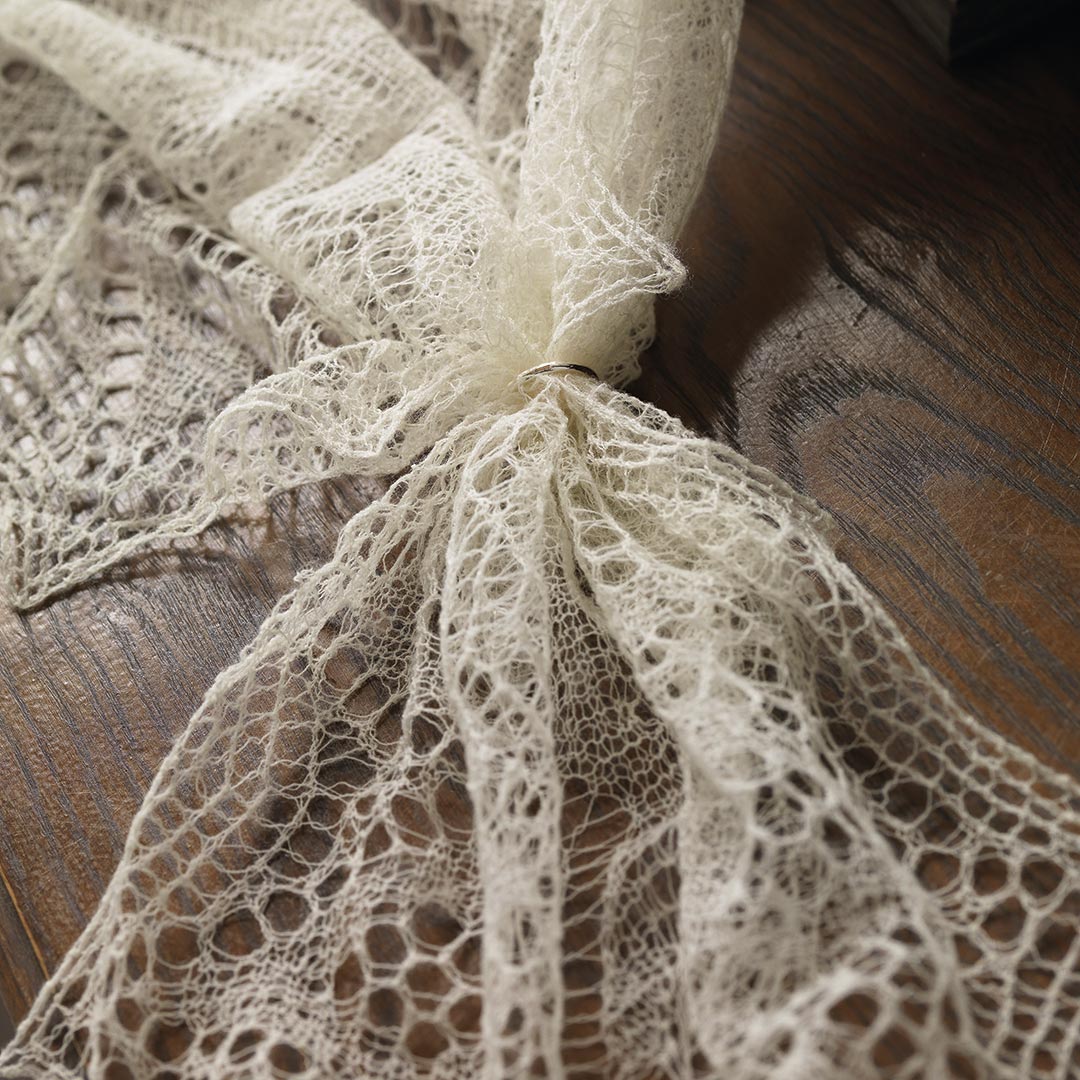Inspired by an article about the Shetland hap in the upcoming Spin Off Fall 2018, I’ve been thinking about spinning for lace, Shetland shawls, and Margaret Stove. Margaret’s knitting and design are known around the world—after all, she received the Queen’s Service Medal and designed official gifts for 2 royal babies. But handspinners can proudly claim her as one of our own.
Margaret wrote the modern classic Wrapped in Lace about her beginnings and growth as a knitter, including what she learned about design, Merino wool, and spinning for lace. In this excerpt from the book, discover how learning her heritage and spinning for lace brought her to appreciate Shetland-inspired shawls even more. —Anne
Margaret’s first shawl fine enough to pass through a wedding ring, spun from a Merino fleece.
In 1961 the available knitting patterns were rather plain, which was disappointing because I wanted to make a special shawl that would be passed on to future generations. I finally settled on an English pattern leaflet that showed two Shetland-inspired patterns. One of them was in Feather and Fan, the first lace pattern I had been taught by my grandmother, which made the choice easy.
Spinning to Knit
It was not until 1970, when I had learned to spin, that I thought of shawls again. I remembered that when I was five years old, my grandmother mentioned Shetland Islanders who could spin and knit a shawl that could be pulled through a wedding ring. What a great challenge to test my competence in both crafts! I aimed at eventually achieving this level of expertise. However, at that time my family and I were living in the village of Arthur’s Pass in the Southern Alps of New Zealand. Far from elegant lace shawls, my immediate ambition was to make warm wool garments for the family.
When I had finished spinning and knitting each project, I practiced seeing how fine I could spin the wool. The first fleece I spun did not feel very pleasant when spun so fine, and I was becoming disillusioned with the idea of spinning laceweight yarns until I met Merino breeders who lived on the high-country sheep stations surrounding our village. They assured me that Merino was the softest of fleeces and could be spun superfine, so the next shearing season I picked up my first Merino fleece.
When you spin yarn as fine as Margaret Stove does, a few locks of yarn can be enough for a day’s spinning. Rather than pinching, she uses her finger to manage the twist as it enters the fiber.
Through a Wedding Ring
After much experimentation, I eventually achieved a two-ply yarn that was fine enough and definitely soft enough, and I knitted my first full-size shawl that could be pulled through a wedding ring (above). I am sure my grandmother, who had died when I was eleven, would have been just as excited as I was when I finally passed this ultimate test.
When my husband’s family saw this shawl, they told me that he was of Shetland descent—in fact, our surname is a Shetland name. I found a new interest in learning about all things Shetland, especially the knitting tradition. (I hoped there might have been patterns unique to his family, but I have not discovered any.) When we visited the Shetland Isles, we located three places on Shetland called “Stove” and the house in North Mavine where his great-grandfather was born and spent his early childhood.
Margaret’s video, Spinning for Lace, shows the methods she developed from spinning ultrafine Merino wool into gossamer-weight yarn.
Margaret lives in Christchurch, New Zealand, where she continues to design knitting patterns. Her granddaughter’s store, Holland Road Yarn Company, carries on the family tradition and stocks Margaret’s Artisan New Zealand Merino yarns.



